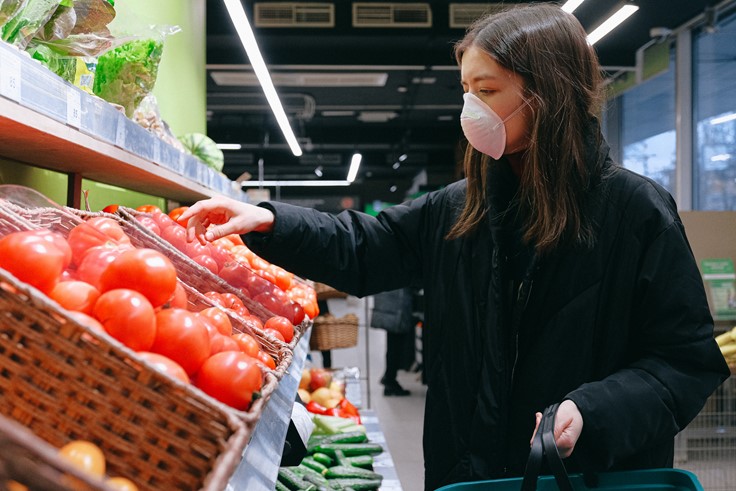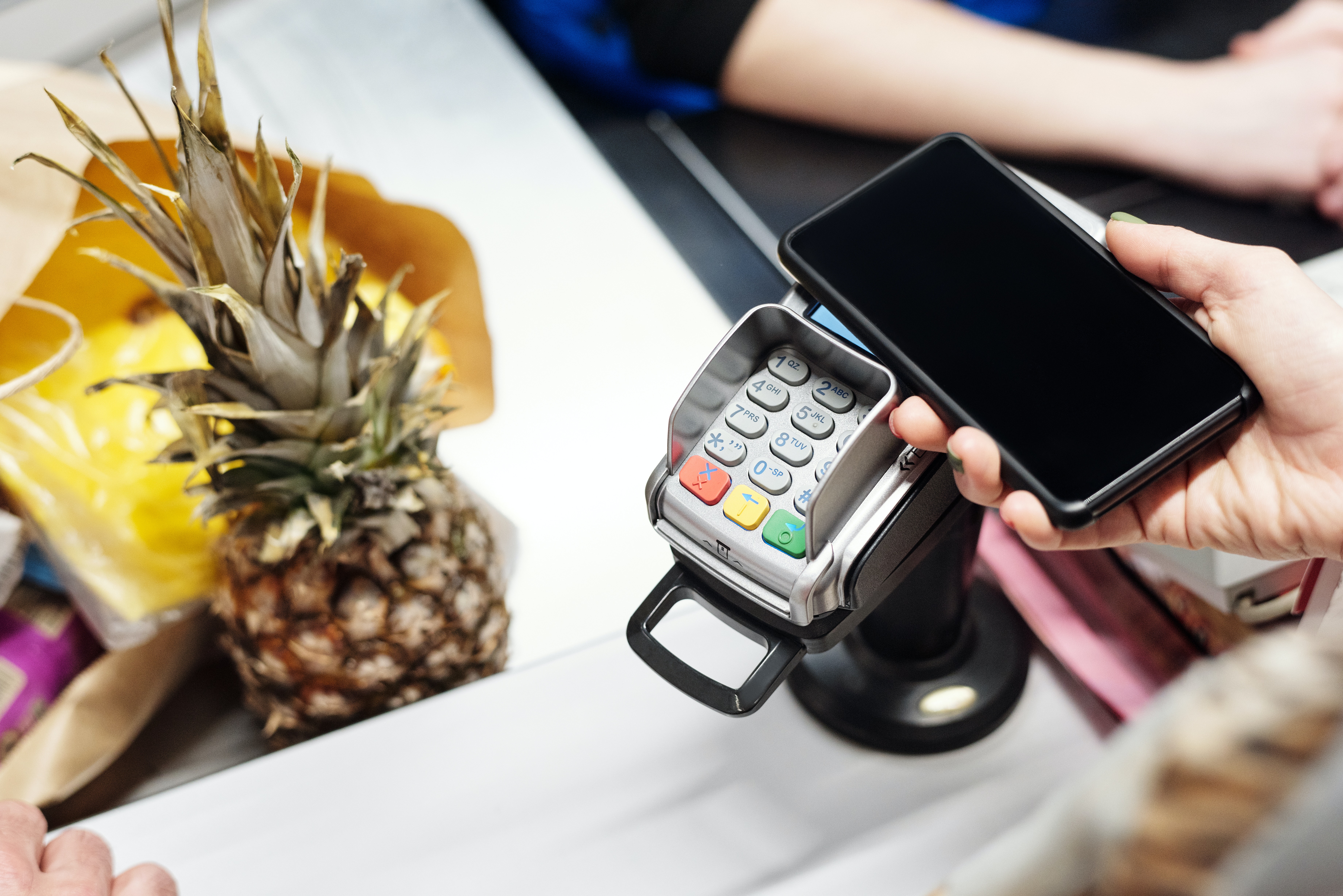The effect of the Pandemic on Retailing, Entrepreneurism and Consumer Behaviour
Professor Stephen Carter, Head of Marketing, Edinburgh Business School, Heriot Watt University.
What has been the effect of the global pandemic on retail and consumer spending, and what will be the challenges for retailers going forward? In this article Prof Stephen Carter charts what’s been happening in the retail sector and considers the effect on consumer behaviour and how entrepreneurs have responded.
2020 saw an overall reduction in global retail spending of 5% compared with 2019, to $547 billion, in contrast to the 5% rise that had been anticipated pre pandemic. The worst impacts were felt in the European and North American economies (around 4-5% reduction on average), but retail still declined by 1.35% across Asia Pacific as a whole: April 2020 saw retail sales in Malaysia drop over 36% year on year as the impact of the pandemic hit hard. (Global Data 2020).

But the pandemic’s impact on retail was not a uniform experience. Taking the UK as an example, where there have to date been three waves of lockdown, the hardest hit sectors have been tourism – flights and hotel bookings cancelled, hospitality – bars and restaurants, sports, and the beauty and cosmetics industry. March 2020 represented the worst month for retail in UK history, with total retail sales of around £28 billion and subsequent retail disasters such as the collapse of Debenhams and Arcadia Group. But, there have been winners too, with a rise in demand for personal hygiene products and hand sanitiser, wifi and home entertainment providers, exercise regimes and holiday bookings for 2022 looking very strong.
The UK government is needing to constantly weigh up the conflicting priorities of health compared with the economy, as up to 8 million UK workers have been furloughed and 3 million jobs are reported lost in the UK.
We’ve seen changes in the supply chain and payment mechanics too, with a decline in “bricks and mortar” sales by 5% as retailers move to a “delivery economy” (except for food, which was up between 1-4%) and cash lost out to further automation of payments as contactless and mobile payments. 
There have been a number of forces at play over the last 12 months. We’ve got used to hearing about the “new normal” but as yet there’s no playbook for what this new normal will look like, and the absence of this breeds uncertainty. We’ve had to come to terms with social distancing and how to enforce that in bricks and mortar retailing – with retailers welcoming only 30-50% of the customers that were previously shopping in store, many are now on the edge. And whilst the Pfizer, Moderna and Astra Zeneca vaccines are now bringing hope, consumers are left wondering how many more waves of the pandemic are still to come.
We’re witnessing quarantines, home schooling, restricted travel permits, a rise in debt, huge unemployment and furlough – all of which can serve to make some people feel less empathetic to others over time. The experiences of burn out for those still working compared with boredom and a sense of hopelessness for those who have been furloughed can set up differing societal views.
Retailers and economists alike are figuring out how to extract the monetary savings from customers in the lockdown and translate into spending. Between the lockdown waves, UK GDP rose by 18% for example!
What is clear, is that the pandemic has accelerated factors in the retail sector that have been long talked about but for which action had been delayed:
- Value: Retailers are looking to create value, through innovation, which improves customer acquisition, margin and retention
- Innovation: There is more direct to consumer activity, which may threaten national brands but has had the effect of expanding markets, with innovation by small and large firms e.g. on line car buying. In SMEs, digital transformation seems to be most relevant for medium sized companies followed by micro enterprises and small businesses
- Quality and Efficiency: consumers want risk free goods, good packaging and quality-retailers and supply chains need to reinforce why they can be trusted
- Transparency about origin: consumers want authentic origins. 65% of global buyers now want to buy local
- A social conscience: consumers are looking favourably on social entrepreneurs who support the more disadvantaged in life e.g. Foodbanks
- Wellbeing: we’re more concerned about our health and wellbeing – as evidenced through the rise of bicycle sales, home cooking, cooking ingredients, meals at home and home exercise, schooling -apps
- Changing ways of working/living-digital: simplified processes, home based working, empty offices, an improvement in the speed of digital applications, blended learning from the education sector, and the rise of the “15 minute economy” e.g. Standard Chartered Bank
- Organisational pivoting: brands are identifying ways in which they can help consumers deal with the pressures of modern life, reassuring on their safety credentials and really focusing on becoming more authentic e.g real and organic rather than packaged and perfect. We are also seeing more and more organisations looking at themselves through a more critical lens, facing up to inequalities in their organisations, for example the global 15% pledge, which calls on retailers to devote at least 15% of their shelf space to black-owned businesses
So, the scene is now set for entrepreneurs to shape our retail future, but how this plays out in reality will depend upon how we see ourselves exiting from the pandemic and on consumer behaviour. Will we bounce back (as has been the case for Australia and New Zealand in late 2020); re-set in early 2021 (which may be the case for the UK and Europe depending upon progress with the vaccine roll out programme) or will the whole world return to normal? There have been a variety of consumer ‘models’ proposed as to how consumers have been behaving during the pandemic-behaviour which may last well beyond the pandemic’s end. One particular interesting one is that of Nielsen (2020) which identified six consumer behaviour thresholds-
- Proactive Health Minded
- Reactive Health Minded
- Pantry Preparation
- Quarantined Living preparation
- Restricted Living
- Living a new normal
Most of these are self-explanatory, and which one is applicable to any individual or family is very much dependent on their own perceptions of the gravity and longevity of the pandemic, personal circumstances and ‘world view’.

The entrepreneurial response so far has been staggering. Online retail soared in the UK! Of the £28 billion retail sales in March 2020, online’s share was 22.3% of the sales value, a year on year increase of 12.5%. By Christmas 2020 spend online was up to £20billion in the UK.
ONS figures confirm that consumers are spending on household goods (up 52%), on in department store (up 34%) and purchasing food online (up 19.7%), whilst spending on textiles, clothing and shoes is on the slide.
We’ve seen tremendous examples of entrepreneurial activity across every sector, whether it is the Cornish fishing industry creating online, or bakers and restaurants offering NHS meals with customer ‘subsidy’, takeaways, flower shops on line. Shirt makers have pivoted to making protective garments for the NHS, and brewers have been making hand gels. The drive for sustainability and better governance has played out with the United Nations Sustainable Development Goals (SDG) Partnerships – focusing on partners supporting health, empathy, purpose and authenticity and with lower thresholds for waste and pollution. And in the education sector more students are looking for HEI programmes that include sustainability in their curriculum.
Other entrepreneurs are seizing the technology impetus with millions of consumers working from home (who knew we’d see the rise of “lounge room fashionistas” or “invitation decliners” in 2020!). Digitally literate companies are leveraging technology with augmented and virtual reality, as a way to cement consumer loyalty e.g. Australia’s Binge and The Iconic to produce ‘In-activewear’. Countries are asking do they have the recipe to foster the digital entrepreneur? And within the education sector, are we providing the ‘new competencies and skill sets’ that will be required post Covid?
If the digital transformation of retail was already underway, the events of 2020 have now driven huge leaps forward. You just need to look at Amazon’s network procedures which allow more efficient processes, such as their refund transport (private van companies); digital cost savings gained by the banks; tailoring and personalisation of consumer offers, further technical developments by the likes of Kantar, Google and Alibaba to track people’s media habits on the web and the ever faster evolution of new processes in product development, manufacture, marketing, sales and service.
If it was not already the case, our view of the consumer decision making process has to be radically adjusted. Whilst it has been the tradition to view the consumer decision making process as a series of steps, affected by ‘internal influences’ like memory, attitudes and learning and ‘external influences’ like competition and legal aspects, the pandemic has brought a whole new set of influences to the process. Externally, consumers are being increasingly influenced by economic, technological and social factors (influencers, friends, family, health, employment and social empathy), ways of working, local sources, authentic and caring brands. Equally, internally, factors such as self-identity, value, empathy, social conscience, survival, prudence versus spend, sustainability, tech savvy-ness and security are becoming predominant influences of consumer behaviour. The challenge to marketers is to harness these influences into products and services, both existing and potential, which will generate, sustain and lead consumer trust and confidence, post pandemic.
This blog has been adapted from a presentation to colleagues at the CIM Malaysia and Tunku Abdul Rahman University College, 21st January 2021.
